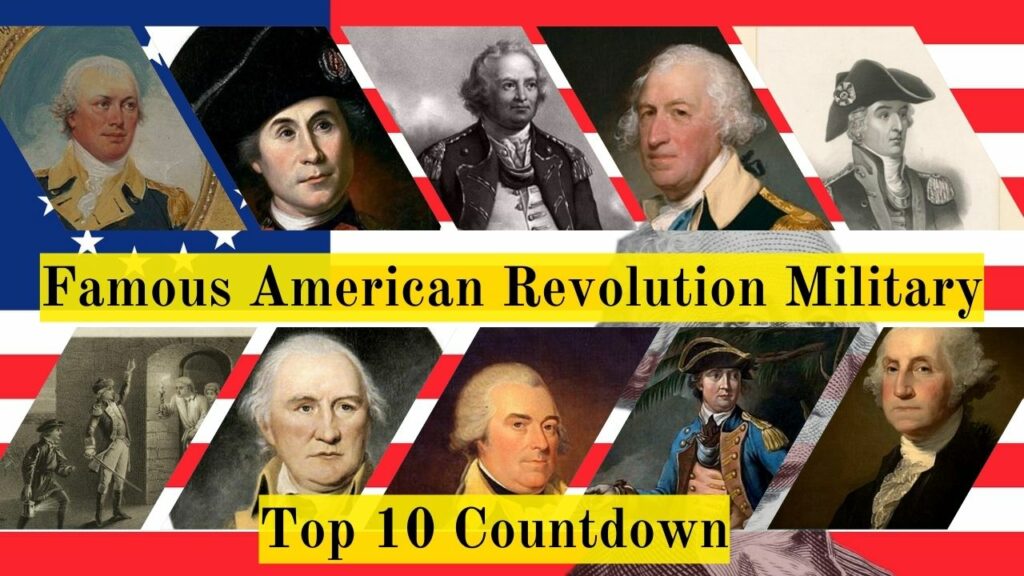
Many people fought in the American Revolution, both for American and for Britain. Those fighting for and against were also either Americans or Foreigners. This top 10 famous military list is Famous American Military fighting for American in the Revolution. Here is our bibliography for these Famous American Military Leaders.
Summary of Famous American Military fighting for American Revolution
- George Washington: Born on February 22, 1732, in Westmoreland County, Virginia, George Washington led the Continental Army throughout the Revolutionary War. He secured a pivotal victory at the Siege of Yorktown and went on to become the first President of the United States.
- Nathanael Greene: Born on August 7, 1742, in Potowomut, Rhode Island, Nathanael Greene played a crucial role in the Southern theater of the war. He implemented successful strategies, notably at the Battle of Guilford Court House, earning Washington’s trust as one of his skilled generals.
- Benedict Arnold: Born on January 14, 1741, in Norwich, Connecticut, Benedict Arnold initially contributed to early American victories, including the Battle of Saratoga. However, he later became a traitor, attempting to surrender West Point to the British, tarnishing his legacy.
- Ethan Allen: Born on January 21, 1738, in Litchfield, Connecticut, Ethan Allen led the Green Mountain Boys in capturing Fort Ticonderoga from the British in 1775. He was a key figure in the early stages of the war in the northern theater.
- Francis Marion: Born in 1732 in Berkeley County, South Carolina, Francis Marion, known as the “Swamp Fox,” employed guerrilla warfare tactics in the Southern theater. His hit-and-run attacks were instrumental in harassing the British during their Southern campaign.
- Horatio Gates: Born on July 26, 1727, in Maldon, Essex, England, Horatio Gates commanded American forces in the crucial victory at the Battle of Saratoga, considered a turning point in the war. He later served as President of the Board of War.
- Anthony Wayne: Born on January 1, 1745, in Easttown Township, Pennsylvania, Anthony Wayne led the Continental Army to victory at the Battle of Stony Point in 1779. Known for his aggressive tactics, he played a crucial role in various military engagements.
- John Paul Jones: Born on July 6, 1747, in Kirkcudbright, Scotland, John Paul Jones became a naturalized American citizen. A notable naval commander, he achieved success in raids against British shipping and is remembered for his courageous actions during the Battle of Flamborough Head.
- Israel Putnam: Born on January 7, 1718, in Salem Village (now Danvers), Massachusetts, Israel Putnam served as a major general in the Continental Army. He contributed to the defense of New York and played a role in the Battle of Bunker Hill.
- Daniel Morgan: Born on July 6, 1736, in Hunterdon County, New Jersey, Daniel Morgan led Continental forces to victory at the Battle of Cowpens in 1781. His strategic contributions in the Southern theater disrupted British supply lines, showcasing his effectiveness as a commander in the Revolutionary War.
Top 10 Countdown Details of Famous American Military
10. Daniel Morgan (1736–1802)
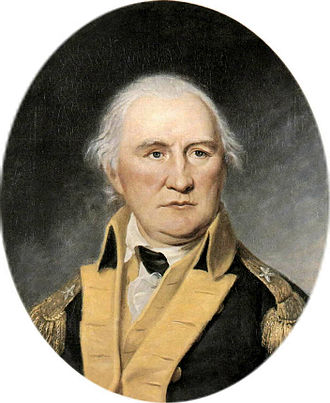
Introduction:
Daniel Morgan, born on July 6, 1736, in Hunterdon County, New Jersey, stands as a key figure in American military history, renowned for his strategic brilliance and decisive leadership during the Revolutionary War. His contributions, particularly in the Southern theater, left an indelible mark on the course of the conflict.
Ten Contributions to the American Revolution by Daniel Morgan:
- Battle of Cowpens: Daniel Morgan’s strategic acumen shone brightly at the Battle of Cowpens in 1781. Leading Continental forces, Morgan orchestrated a brilliant double envelopment, decisively defeating the British and turning the tide in the Southern theater.
- Guerilla Warfare Expertise: Morgan’s mastery of guerrilla warfare tactics proved pivotal. His hit-and-run strategies effectively disrupted British supply lines and communications, forcing the enemy into vulnerable positions.
- Saratoga Campaign: Morgan played a crucial role in the Saratoga Campaign of 1777, contributing to the American victory at the Battle of Saratoga under General Horatio Gates. This triumph is often regarded as the turning point in the Revolutionary War.
- Strategic Retreat at Cowpens: Demonstrating strategic brilliance, Morgan executed a deliberate retreat during the Battle of Cowpens, enticing British forces into a vulnerable position before launching a devastating counterattack.
- Rifle Corps Leadership: Morgan’s leadership extended to the creation and command of the elite Rifle Corps. Renowned for their marksmanship and unconventional tactics, this unit added a unique and effective dimension to American military strategy.
- Siege of Boston Participation: Morgan’s early contributions included serving in the Siege of Boston. His skills as a marksman and leader were recognized, setting the stage for his later pivotal roles in the war.
- Capture Attempt at Fort Quebec: In 1775, Morgan displayed exceptional courage during the failed attempt to capture Fort Quebec, showcasing his commitment to the American cause and earning respect among his peers.
- Promotion to Brigadier General: Acknowledging his leadership prowess, George Washington promoted Morgan to the rank of Brigadier General, highlighting his importance within the Continental Army.
- Post-War Congressional Service: After the war, Morgan continued to serve his nation by representing Virginia in the U.S. House of Representatives. His dedication to the young republic extended beyond the battlefield.
- Legacy of Courage: Daniel Morgan’s legacy endures as a symbol of courage and strategic brilliance. His influence on subsequent generations of military leaders and his pivotal role in securing American independence solidify his place in history.
Conclusion:
In conclusion, Daniel Morgan’s indomitable spirit, tactical genius, and unwavering commitment to the American cause make him a central figure in the success of the Revolutionary War. His contributions, both on and off the battlefield, reverberate through history, shaping the nation’s early years and inspiring future generations of leaders.
9. Israel Putnam (1718–1790)
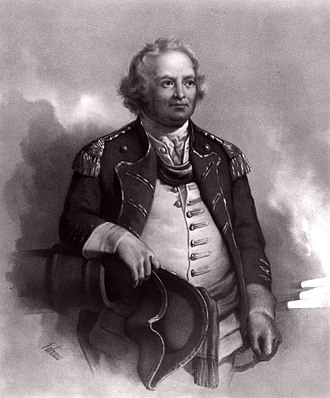
Introduction:
Israel Putnam, born on January 7, 1718, in Salem Village (now Danvers), Massachusetts, was a prominent figure in the early stages of the American Revolutionary War. Renowned for his courage and leadership, Putnam played a vital role in key battles, contributing significantly to the American cause.
Ten Contributions to the American Revolution by Israel Putnam:
- Battle of Bunker Hill: Israel Putnam demonstrated exceptional leadership and bravery during the Battle of Bunker Hill in 1775. Despite the eventual American retreat, his strategic decisions and fearless example inspired his troops.
- Defense of New York: Putnam played a crucial role in the defense of New York in 1776. His strategic insights and efforts helped delay the British advance, allowing the Continental Army valuable time to regroup.
- Siege of Boston: Putnam was instrumental in the Siege of Boston, where he contributed to the containment of British forces. His experience in the French and Indian War proved valuable in organizing the colonial forces.
- Winter at Valley Forge: During the harsh winter at Valley Forge, Putnam’s logistical skills were crucial in maintaining the Continental Army. His efforts, alongside those of George Washington, helped prevent the collapse of the army.
- Leadership in the Continental Army: Putnam served as a major general in the Continental Army, earning the respect of his peers and superiors for his dedication and military acumen.
- Fortifications along the Hudson River: Putnam played a key role in the construction and defense of fortifications along the Hudson River. These fortifications were strategically important in controlling vital waterways.
- Evacuation of New York: During the British occupation of New York City, Putnam played a pivotal role in the strategic withdrawal of American forces, minimizing casualties and preserving a viable fighting force.
- Support for the Continental Congress: Putnam consistently supported the Continental Congress, advocating for the rights of the colonies and contributing to the formulation of military strategy.
- Command in the Highlands: Putnam was entrusted with command in the Highlands, overseeing the defense of critical locations such as West Point. His leadership helped safeguard key strategic positions.
- Legacy of Patriotism: Israel Putnam’s legacy extends beyond his military service; he became a symbol of American patriotism. His commitment to the revolutionary cause and his willingness to face danger head-on left an enduring mark on the nation.
Conclusion:
In conclusion, Israel Putnam’s valor, leadership, and strategic contributions played a vital role in the early years of the American Revolution. His legacy as a patriot and military leader continues to inspire a sense of duty and dedication to the principles of the United States.
8. John Paul Jones (1747–1792)
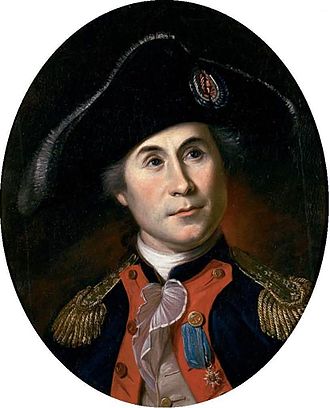
Introduction:
John Paul Jones, born on July 6, 1747, in Kirkcudbright, Scotland, became a naturalized American citizen and a legendary figure in naval history. Serving as a naval commander in the Continental Navy during the American Revolution, Jones earned a reputation for his daring and successful exploits at sea.
Ten Contributions to the American Revolution by John Paul Jones:
- Battle of Flamborough Head: Jones is best known for his famous quote, “I have not yet begun to fight!” during the Battle of Flamborough Head in 1779. Despite facing a superior British ship, he led his crew to victory, becoming a symbol of American naval prowess.
- Raids on British Shipping: Jones conducted numerous successful raids on British shipping along the coasts of England and Ireland. His strategic disruptions significantly impacted British maritime operations.
- Command of the USS Bonhomme Richard: Jones captained the USS Bonhomme Richard during its historic engagement with the HMS Serapis. Despite the Bonhomme Richard sinking, Jones’ tactical brilliance led to the capture of the Serapis, showcasing American naval strength.
- Privateering Campaigns: Jones was actively involved in privateering campaigns, where he commanded and participated in raids on British merchant vessels. These efforts contributed to the economic strain on British resources.
- Service in the Continental Navy: Jones played a crucial role in the establishment and early successes of the Continental Navy, becoming one of its most celebrated commanders.
- Diplomatic Missions: Jones undertook diplomatic missions on behalf of the Continental Congress, working to secure alliances and support for the American cause in Europe.
- Recognition in France: Jones received recognition and honors in France for his naval successes. His fame extended beyond the American colonies, solidifying support for the revolutionary cause.
- Role in the Battle of Saratoga: Before his naval exploits, Jones served as a volunteer in the land forces at the Battle of Saratoga, showcasing his commitment to the American cause.
- Naval Innovations: Jones introduced innovative naval tactics and strategies, emphasizing aggressive and offensive actions rather than traditional naval warfare approaches.
- Legacy in Naval Warfare: John Paul Jones’ legacy endures as one of the most famous and successful naval commanders of the American Revolution. His contributions laid the groundwork for the future development of the United States Navy.
Conclusion:
In conclusion, John Paul Jones’ courage, strategic brilliance, and naval achievements make him an iconic figure in American history. His daring exploits at sea not only secured vital victories during the Revolution but also established a lasting legacy in the annals of naval warfare.
7. Anthony Wayne (1745–1796)
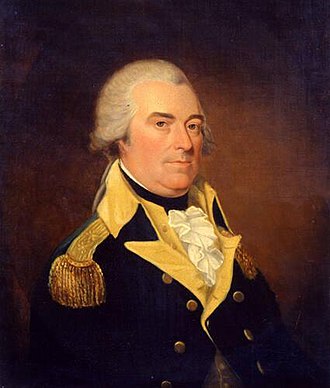
Introduction:
Anthony Wayne, born on January 1, 1745, in Easttown Township, Pennsylvania, was a distinguished American military officer known for his aggressive and effective leadership during the Revolutionary War. Nicknamed “Mad Anthony” for his fearless approach to battle, Wayne played a crucial role in various military engagements that significantly impacted the American cause.
Ten Contributions to the American Revolution by Anthony Wayne:
- Battle of Stony Point: Wayne’s leadership was instrumental in the Continental Army’s victory at the Battle of Stony Point in 1779. His bold and daring nighttime assault on the heavily fortified British position showcased his tactical acumen.
- Defense of Fort Ticonderoga: Wayne played a crucial role in the defense of Fort Ticonderoga in 1777, demonstrating his ability to adapt to different terrains and effectively lead troops in critical situations.
- Capture of the British Blockhouse: During the Siege of Yorktown in 1781, Wayne led a successful assault on a key British blockhouse, contributing to the overall victory that essentially ended the Revolutionary War.
- Service in the Southern Theater: Wayne’s leadership in the Southern theater of the war helped disrupt British supply lines and communication, contributing to the overall strategy that led to the British defeat.
- Commander of the Pennsylvania Line: Wayne was appointed as the commander of the Pennsylvania Line, where he trained and disciplined his troops, earning their respect and loyalty.
- Battle of Brandywine: Wayne’s bravery was evident at the Battle of Brandywine in 1777, where he sustained serious injuries but continued to lead his troops, earning commendation for his courage.
- Forced March to Yorktown: Wayne’s quick decision-making and forced march to Yorktown during the Siege of Yorktown played a crucial role in cutting off British escape routes and securing a decisive victory.
- Indian Campaigns in the Northwest: After the Revolutionary War, Wayne continued his military service by leading campaigns against Native American confederacies in the Northwest Territory, addressing post-war conflicts.
- Negotiations with Native American Tribes: Wayne engaged in diplomatic efforts with Native American tribes to establish peace, demonstrating his commitment to finding resolutions to conflicts through negotiation.
- Legacy as a Military Leader: Anthony Wayne’s legacy extends beyond the Revolutionary War; he is remembered as a skilled and effective military leader whose contributions had a lasting impact on the development of the United States Army.
Conclusion:
In conclusion, Anthony Wayne’s fearless and strategic leadership played a pivotal role in key battles and campaigns of the American Revolution. His legacy as “Mad Anthony” endures as a testament to his dedication to the American cause and his impact on the shaping of the early United States.
6. Horatio Gates (1727–1806)
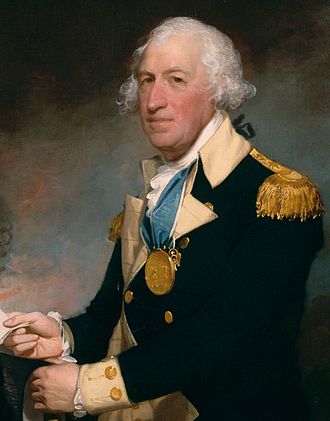
Introduction:
Horatio Gates, born on July 26, 1727, in Maldon, Essex, England, played a significant role in the American Revolutionary War as a distinguished military commander. Recognized for his leadership, Gates achieved prominence through his pivotal contributions, particularly in the Northern theater of the war.
Ten Contributions to the American Revolution by Horatio Gates:
- Command at the Battle of Saratoga: Gates served as the American commander at the pivotal Battle of Saratoga in 1777. His strategic decisions and coordination with Benedict Arnold led to a decisive victory, considered a turning point in the war.
- Role in Fort Ticonderoga’s Capture: Gates played a key role in the American capture of Fort Ticonderoga in 1775. This early victory boosted American morale and secured a vital strategic position.
- Presidency of the Board of War: Gates served as the President of the Board of War in 1777-1778, contributing to the coordination of military efforts and strategic planning during a critical period of the war.
- Defense of Philadelphia: Gates was tasked with the defense of Philadelphia during the British occupation in 1777. His efforts aimed to mitigate the impact of the occupation on the Continental Army.
- Strategic Leadership in Northern Theater: Gates’ strategic leadership in the Northern theater of the war included organizing and overseeing the defenses of key regions, contributing to the overall American strategy against the British.
- Victory at the Battle of Freeman’s Farm: While his overall role at Saratoga is most notable, Gates also played a crucial part in the Battle of Freeman’s Farm, a precursor to Saratoga, where his tactical decisions set the stage for the later triumph.
- Support for the Continental Army: Gates advocated for better conditions and support for the Continental Army, emphasizing the importance of providing resources and proper care for the troops.
- Leadership in the Southern Theater: Gates was assigned command in the Southern theater later in the war, although his performance at the Battle of Camden was less successful, marking a contrast to his earlier achievements.
- Post-War Land Grant: Following the war, Gates received a land grant as a reward for his service, reflecting the nation’s gratitude for his contributions to American independence.
- Contribution to American Military Doctrine: Gates’ experiences and observations during the war contributed to the development of American military doctrine, influencing future generations of military leaders.
Conclusion:
In conclusion, Horatio Gates’ leadership, particularly at the Battle of Saratoga, played a critical role in securing American victory. His contributions to military planning, strategic leadership, and dedication to the cause left a lasting impact on the Revolutionary War and the emerging United States.
5. Francis Marion (1732–1795)
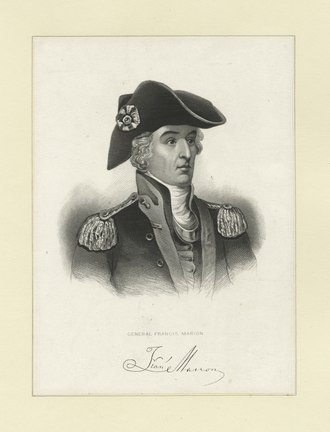
Introduction:
Francis Marion, born in 1732 in Berkeley County, South Carolina, earned the moniker “Swamp Fox” for his innovative guerrilla warfare tactics during the American Revolutionary War. A key figure in the Southern theater, Marion’s contributions had a significant impact on American efforts to resist British forces.
Ten Contributions to the American Revolution by Francis Marion:
- Guerilla Warfare Expertise: Marion’s mastery of guerrilla warfare tactics distinguished him in the Southern theater. Operating in swamps and forests, his unconventional methods disrupted British supply lines and communication.
- Siege of Fort Watson: Marion’s leadership during the Siege of Fort Watson showcased his ability to utilize the natural terrain to his advantage. The successful capture of the fort demonstrated the effectiveness of his guerrilla tactics.
- Capture of Georgetown: Marion led the capture of Georgetown in 1781, employing surprise attacks and swift maneuvers. This success further weakened British control in the South.
- Participation in the Battle of Sullivan’s Island: Marion fought in the Battle of Sullivan’s Island in 1776, displaying his commitment to the American cause in the early stages of the war.
- Defense of Charleston: During the British siege of Charleston in 1780, Marion’s guerrilla tactics were instrumental in providing support and resistance against the overwhelming British forces.
- Constant Harassment of British Forces: Marion’s ability to constantly harass and confound British forces, even in unfavorable conditions, earned him a reputation as a formidable opponent.
- Escape from Tarleton’s Pursuit: Marion’s daring escape from the pursuit of the notorious British cavalry officer Banastre Tarleton showcased his resourcefulness and evasive skills.
- Protection of Civilian Populations: Marion prioritized the protection of civilian populations in the areas where he operated, earning him the support and loyalty of local communities.
- Influence on Later Military Leaders: Marion’s guerilla warfare tactics influenced later military leaders, including those in the American Civil War who studied and applied his strategies.
- Strategic Retreats: Marion’s strategic retreats when faced with overwhelming forces allowed him to preserve his forces and return to strike when the conditions were more favorable.
Conclusion:
In conclusion, Francis Marion’s role as the “Swamp Fox” in the Southern theater of the American Revolution reflects a remarkable display of guerrilla warfare expertise. His ability to adapt to challenging environments and consistently outmaneuver British forces contributed significantly to the ultimate success of the American cause in the South.
4. Ethan Allen (1738–1789)
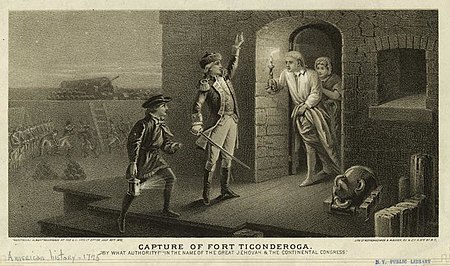
Introduction:
Ethan Allen, born on January 21, 1738, in Litchfield, Connecticut, was a charismatic and daring military leader who played a crucial role in the early stages of the American Revolutionary War. Best known for leading the Green Mountain Boys, Allen’s actions demonstrated a fierce commitment to the cause of American independence.
Ten Contributions to the American Revolution by Ethan Allen:
- Capture of Fort Ticonderoga: Ethan Allen’s leadership was instrumental in the daring capture of Fort Ticonderoga in 1775. Leading the Green Mountain Boys, he seized the strategic fort, securing valuable artillery and supplies for the Continental Army.
- Leadership in the Green Mountain Boys: Allen’s charismatic leadership of the Green Mountain Boys, a militia group from the New Hampshire Grants region, contributed significantly to early American victories and resistance against British forces.
- Role in the Battle of Crown Point: Allen participated in the Battle of Crown Point in 1775, showcasing his military skills and determination in the early conflicts of the Revolutionary War.
- Montreal Expedition: Allen played a key role in the ill-fated Montreal Expedition in 1775, demonstrating his commitment to expanding the scope of the Revolution beyond the American colonies.
- Capture Attempt at Fort Quebec: Allen’s bold attempt to capture Fort Quebec in 1775, though unsuccessful, showcased his audacity and determination in the face of challenging military objectives.
- Imprisonment and Escape: Following the failed attempt to capture Fort Quebec, Allen endured imprisonment by the British. His eventual escape and return to the American cause further solidified his reputation as a resilient and determined leader.
- Advocacy for Vermont Statehood: Allen was a strong advocate for Vermont’s statehood, working towards the establishment of the independent Vermont Republic before it eventually joined the United States.
- Authorship of “Reason: The Only Oracle of Man”: Ethan Allen’s written work, “Reason: The Only Oracle of Man,” reflected his philosophical and political views, contributing to the intellectual discourse of the time.
- Command in the Battle of Longue-Pointe: Allen’s command in the Battle of Longue-Pointe showcased his continued military involvement, although this engagement resulted in his capture by British forces.
- Legacy as a Symbol of Independence: Ethan Allen’s legacy endures as a symbol of independence and resistance. His contributions in the early stages of the Revolution left an indelible mark on the spirit of the American cause.
Conclusion:
In conclusion, Ethan Allen’s bold leadership and daring actions, particularly in the capture of Fort Ticonderoga, played a vital role in the early successes of the American Revolution. His legacy as a patriot and advocate for independence continues to inspire those who value the principles of liberty and self-determination.
3. Benedict Arnold (1741–1801)
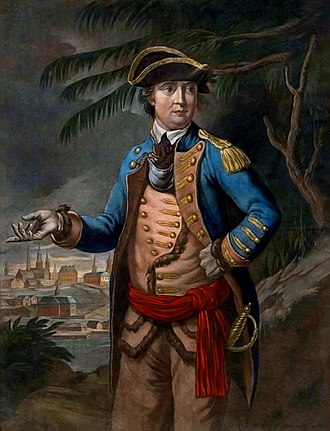
Introduction:
Benedict Arnold, born on January 14, 1741, in Norwich, Connecticut, began his military career as a dedicated patriot but later became infamous for his betrayal. Despite his significant early contributions to the American cause, Arnold’s legacy is marred by his later actions during the American Revolutionary War.
Ten Contributions to the American Revolution by Benedict Arnold:
- Leadership at the Battle of Saratoga: Arnold played a crucial role in the American victory at the Battle of Saratoga in 1777. His strategic brilliance and courage on the battlefield earned him praise and recognition as one of the Continental Army’s most effective commanders.
- Defense of Fort Stanwix: Arnold’s leadership in the defense of Fort Stanwix in 1777 showcased his ability to inspire troops and make strategic decisions under challenging circumstances.
- Operations in the Northern Theater: Arnold’s military expertise was evident in various operations in the Northern theater, contributing to the overall American strategy against the British.
- Invasion of Quebec: Arnold’s daring expedition to Quebec in 1775 demonstrated his early commitment to the Revolutionary cause, although the mission ultimately ended in failure.
- Recovery of Rhode Island: Arnold played a role in the successful American effort to recover Rhode Island in 1778, contributing to the defense and eventual liberation of key territories.
- Command of West Point: Arnold was given command of West Point, a critical fort on the Hudson River, in 1780. His subsequent attempt to betray West Point to the British became one of the most infamous episodes in American history.
- Battle of Valcour Island: Arnold’s leadership in the Battle of Valcour Island in 1776, while facing a superior British fleet, demonstrated his naval skills and determination.
- Promotion to Major General: Arnold’s early successes and leadership qualities led to his promotion to the rank of major general in the Continental Army.
- Contribution to the Siege of Boston: Arnold’s efforts during the Siege of Boston, including his role in capturing Fort Ticonderoga, contributed to the early momentum of the American forces.
- Legacy of Betrayal: Unfortunately, Benedict Arnold’s legacy is overshadowed by his betrayal of the American cause. His attempt to surrender West Point to the British in 1780 remains one of the most infamous acts of treason in U.S. history.
Conclusion:
In conclusion, Benedict Arnold’s early contributions to the American Revolution, marked by military skill and bravery, stand in stark contrast to his later betrayal. While his military prowess earned him early acclaim, his legacy is forever tarnished by his treasonous actions during the war.
2. Nathanael Greene (1742–1786)
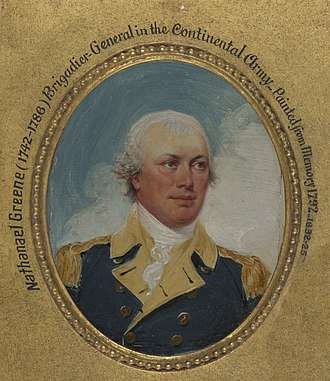
Introduction:
Nathanael Greene, born on August 7, 1742, in Potowomut, Rhode Island, emerged as one of the most capable and strategic American generals during the Revolutionary War. His leadership, military acumen, and adaptability played a crucial role in several key campaigns, earning him the trust and admiration of General George Washington.
Ten Contributions to the American Revolution by Nathanael Greene:
- Command of the Southern Army: Appointed by George Washington to lead the Southern Army in 1780, Greene undertook the challenging task of reversing American fortunes in the Southern theater.
- Battle of Guilford Court House: Greene’s strategic brilliance was evident in the Battle of Guilford Court House in 1781. Although the battle resulted in an American tactical withdrawal, it weakened the British forces significantly, setting the stage for their ultimate defeat in the South.
- Strategic Retreats: Greene’s use of strategic retreats and avoiding direct confrontation with the superior British forces demonstrated his understanding of military tactics and the importance of preserving his army for future engagements.
- Command in the Northern Theater: Greene served in the Northern theater early in the war, participating in the Siege of Boston and the defense of Fort Ticonderoga. His early experiences laid the foundation for his later successes.
- Command in the Battle of Trenton: Greene played a key role in the Battle of Trenton in 1776, showcasing his leadership skills and commitment to the American cause.
- Development of the Continental Army: Greene’s efforts in the reorganization and training of the Continental Army contributed to its development into a more effective and disciplined fighting force.
- Diplomatic Missions: Greene undertook diplomatic missions, representing American interests and seeking support from European allies during the war.
- Fortification of the South: Recognizing the importance of fortifications, Greene worked to strengthen defenses in the Southern theater, making it more challenging for the British to achieve their objectives.
- Contributions to Military Strategy: Greene’s writings on military strategy and tactics, including his observations on the strengths and weaknesses of the Continental Army, had a lasting impact on the development of American military thought.
- Legacy of Leadership: Nathanael Greene’s legacy endures as a testament to his leadership, adaptability, and strategic thinking. His contributions played a crucial role in the success of the American Revolution.
Conclusion:
In conclusion, Nathanael Greene’s leadership in the Southern theater and his earlier contributions in the Northern theater solidify his place as one of the most effective generals of the American Revolution. His strategic brilliance and commitment to the cause significantly influenced the outcome of key battles and campaigns.
1. George Washington (1732–1799)
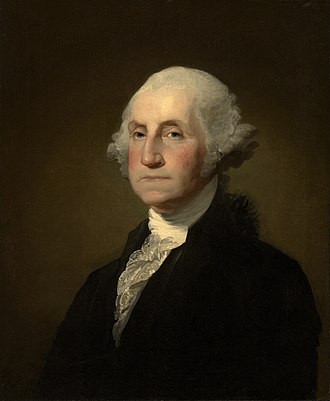
Introduction:
George Washington, born on February 22, 1732, in Westmoreland County, Virginia, stands as an iconic figure in American history, revered as the “Father of His Country.” As the Commander-in-Chief of the Continental Army during the Revolutionary War, Washington played an unparalleled role in the founding of the United States.
Ten Contributions to the American Revolution by George Washington:
- Commander-in-Chief of the Continental Army: George Washington’s appointment as Commander-in-Chief in 1775 marked the beginning of his pivotal role in the American Revolution. His leadership unified the diverse colonial forces under a single command.
- Victory at the Siege of Yorktown: Washington’s strategic brilliance was evident in the Siege of Yorktown in 1781, a campaign that ultimately led to the British surrender. This victory effectively ended the Revolutionary War.
- Winter at Valley Forge: Washington’s leadership during the harsh winter at Valley Forge (1777–1778) showcased his dedication to the Continental Army. Despite challenging conditions, he implemented reforms and training that improved the army’s effectiveness.
- Crossing of the Delaware River: The daring crossing of the icy Delaware River in December 1776 and the subsequent victory at the Battle of Trenton demonstrated Washington’s resolve and ability to strike decisive blows against the British.
- Defense of New York: Washington’s strategic decisions during the defense of New York in 1776, while facing a superior British force, allowed the Continental Army to escape to fight another day.
- Retreat from Long Island: Washington’s skillful retreat and successful evacuation of his army from Long Island in 1776 prevented a potential disaster and preserved the Continental Army for future campaigns.
- Creation of the Badge of Military Merit: Washington established the Badge of Military Merit, a precursor to the Purple Heart, to honor soldiers’ exceptional service and merit. This award reflects his commitment to recognizing and rewarding bravery.
- Farewell to Officers at Fraunces Tavern: Washington’s poignant farewell to his officers at Fraunces Tavern in New York City in 1783 demonstrated his humility and commitment to the principles of a civilian-led government.
- Resignation as Commander-in-Chief: Washington’s voluntary resignation as Commander-in-Chief in 1783, returning power to civilian authorities, set a crucial precedent for the peaceful transfer of military power.
- Presidency of the Constitutional Convention: Washington’s leadership as the presiding officer of the Constitutional Convention in 1787 contributed to the drafting of the United States Constitution, shaping the nation’s government.
Conclusion:
In conclusion, George Washington’s leadership, courage, and strategic acumen were paramount to the success of the American Revolution. His enduring legacy as a military leader and statesman laid the foundation for the United States and established him as a symbol of American ideals and principles.
Find more Military Famous Folks here.
